| Attribut | Détails |
|---|---|
| Note | Prenez deux ou trois échantillons différents pour la prédiction avant le test |
| Équipement d'exploitation | Spectrophotomètre |
| Chat non | BC3310 |
| Taille | 50T/48S |
Composants:
Extraire la solution: 60 mL ×1. Stockage à 4℃.
Réactif I: 45 mL×1, stored at 4℃.
Réactif II: powder×1, stored at -20℃ and protected from light. Dissolve it in 35 mL de Réactif I avant utilisation. The reagent that cannot be used up shall be stored at -20℃ after repacking, repeat freezing and thawing are prohibited;
Réactif III: 45 µL×1, stored at 4℃ and protected from light. Before temporary use, add distilled water to dilute according to the volume ratio of 1:120, to prepare when the solution will be used.
Réactif IV: 155 µL×1, stored at 4℃ and protected from light. Before temporary use, add distilled water to dilute according to the volume ratio of 7:250, to prepare when the solution will be used.
Réactif V: Poudre × 1, stored at -20℃ and protected from light. Dissolve it in 2.5 mL of distilled water before use, the reagent that cannot be used up shall be stored at -20℃ after repacking, repeat freezing and thawing are prohibited;
Description du produit:
PEPCK (CE 4.1.1.32) est largement trouvé chez les animaux, flowering plants, algae, some fungi, and bacteria. The enzyme catalyzes the conversion of oxaloacetic acid to phosphoenolpyruvate, which is the first-rate limiting enzyme regulating gluconeogenesis.
PEPCK catalyzes oxaloacetic acid to form phosphoenolpyruvate and CO2, pyruvate kinase and lactate dehydrogenase further catalyze the oxidation of NADH to NAD+ in turn, and determine the NADH decline rate at 340 nm, which can reflect the PEPCK activity.
Réactifs et équipements requis mais non fournis
Spectrophotomètre, centrifugeuse basse température, water bath pot, 1 mL quartz cuvette, pipette réglable, mortier/homogénéisateur, glace et eau distillée
Procédure
je. Extraction of crude enzyme solution:
- Échantillon de tissu:
The proportion of tissue mass (g): volume of extract solution (ml): 1:5~10 (it is recommended to weigh about 0.1 g of tissue, ajouter 1 mL of extract solution) for ice bath homogenate, then centrifugate at 8000 ×g pour 10 minutes à 4℃, take the supernatant and place it on ice for testing.
- Bacteria or cultured cells:
D'abord, collect bacteria or cells into the centrifuge tube, and then discard the supernatant. The number of cells (104): the volume of the extract (ml) is 500-1000:1 (1 mL of the extract solution is recommended to be added to 5 million bacteria or cells), and the cells are broken by ultrasonic wave in ice bath (Power: 200W or 20%, ultrasonic:3s, interval:10s, Repeat 30 fois). Then centrifuged at 8000 ×g pour 10 minutes à 4℃, take the supernatant and place it on ice for testing.
- Échantillon de sérum: Direct determination.
II. Test procédure:
- Preheat the spectrophotometer for more than 30 minutes, ajuster la longueur d'onde à 340 nm, and adjust to zero with distilled
- Solution de travail: mix Reagent II, Réactif III, Reagent IV in the proportion of 7:1:1(V:V:V) Avant utilisation. Prepare when the solution will be used.
- Preheat the working solution at 37℃ (mammifère) ou 25 ℃ (autres espèces) pour 5 minutes.
- Tableau d'opération: Add the following reagents to the 1 mL quartz cuvette in turn:
| Nom du réactif (µL) | Tube vierge(B) | Tube à essai(T) |
| Échantillon | – | 50 |
| Eau distillée | 50 | |
| Solution de travail | 900 | 900 |
| Réactif V | 50 | 50 |
| Add Reagent V and mix it immediately. Measure the absorbance value A1 at 340 nm for 10s and A2 at 70s. Calculate ΔAT= A1T- A2T, ΔAB= A1B- A2B, and ΔA =ΔAT-ΔAB. Blank tube only needs to be done once or twice. | ||
III. Calculation of PEPCK:
- Calculation by micro quartz cuvette
- Calculated by tissue protein concentration:
Definition of enzyme activity: one unit of enzyme activity is defined as the amount of enzyme that catalyzes the consumption of 1 nmol of NADH per minute, chaque milligramme de protéine.
PEPCK activity (U/mg prot) = ΔA÷(ε×d)×VRT×109 ÷ (VS× Cpr) ÷ T =3215.4×ΔA÷Cpr
- Calculated by the quality of tissue samples:
Definition of enzyme activity: one unit of enzyme activity is defined as the amount of enzyme that catalyzes the consumption of 1 nmol of NADH per minute, chaque gramme d'échantillon.
PEPCK activity (U/g fresh weight) = ΔA÷(ε×d)×VRT×109 ÷ (VS÷VST×W) ÷T= 3215.4×ΔA÷W
- By cell count:
Definition of enzyme activity: one unit of enzyme activity is defined as the amount of enzyme that catalyzes the consumption of 1 nmol of NADH per minute every 10 thousand cells
PEPCK activity (Cellule U/104)=ΔA÷(ε×d)×VRV×109÷(VS÷VST×500)÷T=6.43×ΔA
- Calculated by serum volume:
Definition of enzyme activity: one unit of enzyme activity is defined as the amount of enzyme that catalyzes the consumption of 1 nmol of NADH per minute every milliliter of serum
PEPCK activity (U/mL) = ΔA÷(ε×d)×VRV×109÷VS÷T=3215.4×ΔA
ε: Molar extinction coefficient of NADH, 6.22×103 L/mol/cm; d: Light diameter of cuvette, 1 cm;
VRT: Total volume of reaction system, 0.001 L;
VS: The volume of sample in reaction system, 0.05 ml; VST: The volume of extract solution, 1 ml;
Cpr: Concentration de protéines de l'échantillon, mg/ml, Self-determination of protein concentration; W: The mass of sample mass, g;
T: Temps de réaction, 1 minutes;
500: Total number of bacteria or cells, 5 million; 109: Unit conversion factor, 1 mol = 109 nmol.
Note:
- When A1 is less than 1 or ΔA is greater than 0.6, it is recommended to dilute the sample to a proper multiple before determination to improve the detection
- For samples with high enzyme activity, such as animal liver, kidney and other tissues, it is recommended to dilute the extract to 5 times or more for
- The blank tube is a test well for testing the quality of each reagent component. Under normal conditions, the change does not exceed06.
- The steps of sample adding and mixing shall be rapid, and the stopwatch timing shall be accurate. If conditions permit, it is recommended that two persons cooperate to complete this
Experimental Example:
- Take 0.1g liver and add 1 ml extract solution for homogenate. Take the supernatant and dilute it twice with the extract solution. Then operate according to the determination steps. Measure and calculate: ΔAT= A1D- A2D= 1.175-0.532=0.643, ΔAB= A1B – A2B =1.29-1.244=0.046, ΔA = ΔAT – ΔAB = 0.643-0.046 = 0.597
PEPCK activity (U/g masse) = 3215.4×ΔA÷W×10 (taux de dilution) = 3215.4×0.597÷0.1×10=191959.4 U/g mass.
- Take 0.1g aloe vera and add 1 ml extract solution for homogenization, take the supernatant and operate according to the determination steps. Measure and calculate ΔAT = A1T- A2T =1.257-1.106=0.151, ΔAB= A1B- A2B =1.29-1.244=0.046, ΔA = ΔAT – ΔAB =0.151-0.046=0.105
PEPCK activity (U/g masse) = 3215.4 × ΔA÷W =3215.4×0.105÷0.1=3376.17 U/g mass.
Produits connexes:
BC0730/BC0735 Pyruvate Carboxylase PC) Kit de test d'activité
BC0920/BC0925 Fructose 1,6-bisphosphatase FBP) Kit de test d'activité
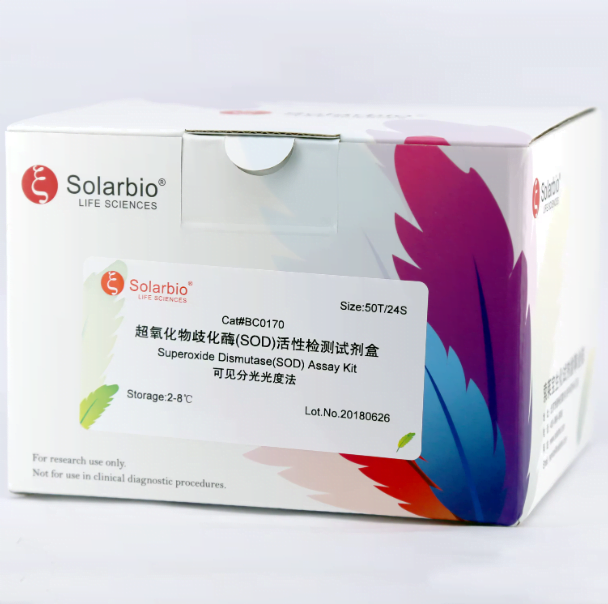
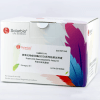
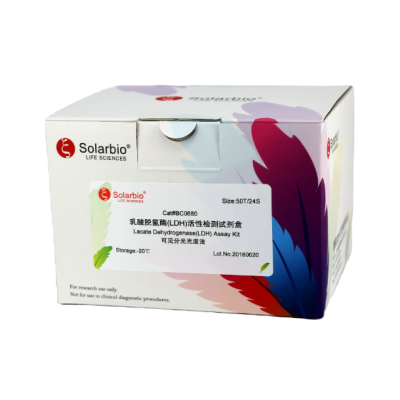
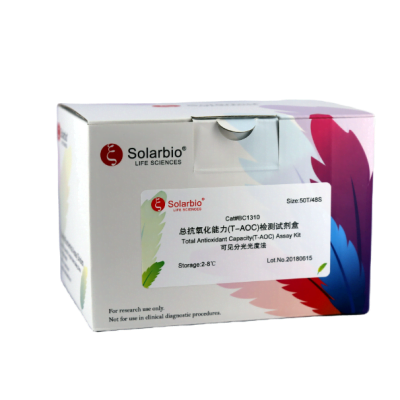
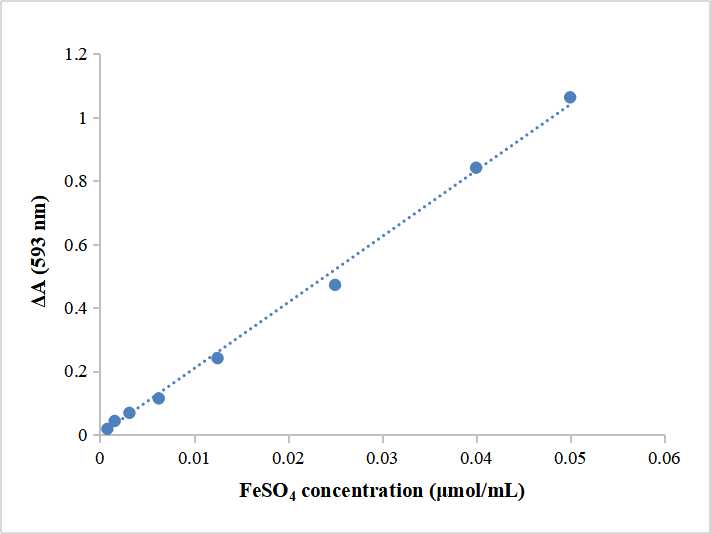
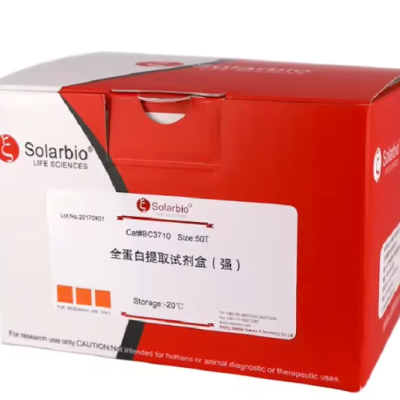
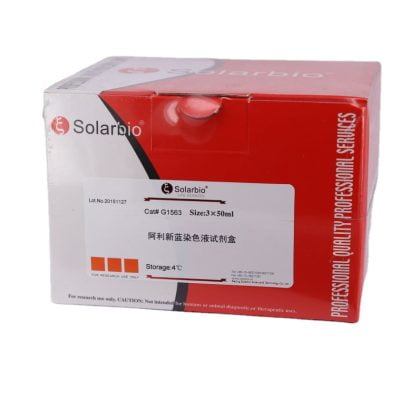
Commentaires
Il n'y a pas encore de critiques.